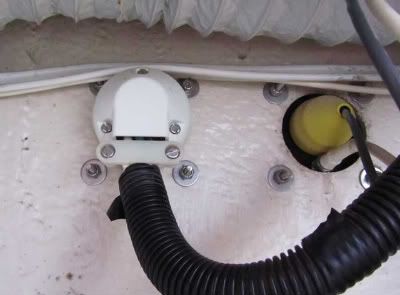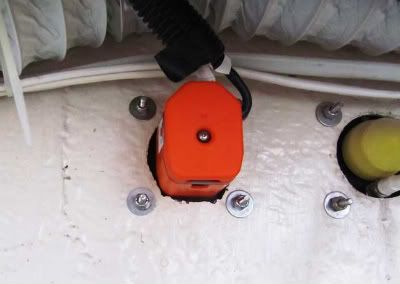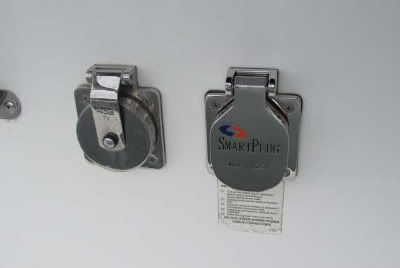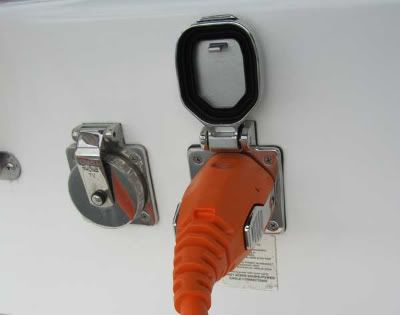Anyway, I purchased a conversion kit as well as a molded, 50ft shore power chord. My rational for doing this was that I always like having two shore power chords. I'm essentially a lazy person and want as little to do as I'm heading our for an overnight or weekend as possible. It isn't hard to coil up a shore power chord and bring it on board, but I prefer to keep one on the boat and leave one permanently on the dock. Part of the reason is that I'm particular about how my dock chord is attached to the dock. So, I'll convert the end of the chord that I keep on the boat, and use a new molded chord for the one that is left on the dock. This increased the cost a lot, but for me it is worth it.
Changing out the plug on the on the boat isn't that difficult. However, it would have been a lot easier and quicker with another pair of hands. I have long arms, and I'm not sure someone shorter, with shorter arms, would have been able to do it solo. The hole that was drilled in my stern to accept the existing plug (receptacle or boatside connector is more accurate I suppose) is just slightly too small to accept the SmartPlug connector. My Dremel would have made short work of making it a tad larger, but since I had no 120 power on the boat (since it was shut off and disconnected obviously) and I didn't have a long enough extension chord, I had to use a hand file. It took a bit longer but was not difficult. Dropping tools, nuts, and washers down into the aft lazarette and retrieving them took a bit longer as well.
One thing that I didn't have with me and I wish I did was some electrical grease. After wiring the connector, I would have liked to cover the connections with grease to keep moisture out of the connections. That is something that will be pretty easy to do when I go out to boat since the connector is readily accessible to the aft lazarette. Here are some photos:
Interior of existing connector:

Interior of SmartPlug connector:

Exterior, connector installed:

Exterior with power chord attached:
